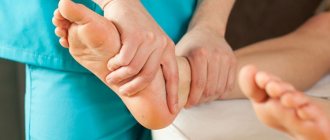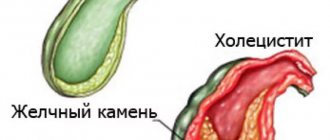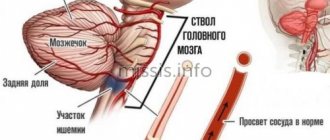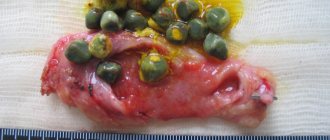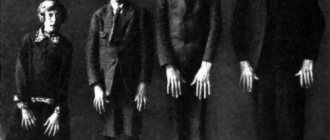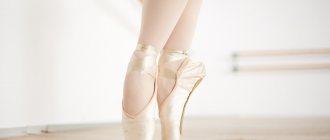Gout
Gout is a disease consisting of a disorder of uric acid metabolism. Gout is usually classified as a joint disease because excess uric acid forms salts (urates), which are deposited primarily in the joints. The first joint affected is the joint of the big toe. An inflamed bump on the thumb is a characteristic symptom of gout.
Genetically, men are more predisposed to this disease. Among the sick, almost 95% of them are. The peak incidence in men occurs at the age of 40-50 years, in women – from 60 years and older. However, gout can also affect people at a younger age.
Causes of gout
Any product of biological origin contains purines - substances that are building materials for RNA and DNA. Purine bases ingested in food are broken down, resulting in the formation of uric acid. This is a normal process. Uric acid is present in body tissues and blood plasma. The blood carries uric acid to the kidneys, where it is filtered and excreted in urine. Part of the uric acid (1/3) is excreted through the intestines. If this normal metabolism is disrupted, uric acid begins to accumulate in excess amounts.
Violations of purine metabolism can be caused by:
- genetically determined fermentopathy
. Gout develops if the production of enzymes responsible for converting purine bases into uric acid and removing the latter from the body deviates from the norm (deficiency of some enzymes is critical, hyperfunction of others). This disorder is largely due to DNA damage. The site responsible for these enzymes is located on the X chromosome. Men have one X chromosome, and women have two. This is why men are more likely to suffer from gout (women have, so to speak, a “backup copy” of the necessary genes);
- increased consumption of purine bases
. In ancient times, gout was called the “disease of kings.” The kings ate the best food, and could eat the meat of young animals, deli meats and cream pies unlimitedly (and these products are leaders in purine content. There are also a lot of purines in fatty fish, meat and fish broths, and legumes). In itself, an excess of purines in food is not dangerous, since normally the kidneys cope with the entire volume of uric acid produced. However, if there is a genetic pathology or kidney problems, gout becomes very likely;
- violation of the excretion of uric acid from the body
. If you have kidney disease, uric acid filtration may decrease. Less of it will be excreted, and its concentration in the blood will increase;
- increased catabolism of the body's own purine compounds
. Man is part of the biological world, and our body is built according to general laws. RNA and DNA are present in our body - in every cell, which means they have their own purine bases. Increased cell destruction (or otherwise catabolism - the breakdown of complex compounds into simpler ones) leads to the same increase in uric acid in the blood as if we began to receive an excess amount of purines from the outside. The reasons for the increased catabolism of purine compounds in one's own body may be radiotherapy or chemotherapy, taking certain medications, hemolysis (decomposition of red blood cells, which is caused by severe infectious diseases or diseases of the hematopoietic system).
Treatment of gouty arthritis
The goal of treatment for gouty arthritis is to improve disease outcomes. For this purpose, mainly medicinal treatment methods are used. Non-drug methods are of auxiliary value.
Drug treatment
The main objectives of drug treatment of gouty arthritis are:
- relieving inflammation and pain in acute arthritis;
- preventing attacks of arthritis by reducing uric acid in the blood.
Treatment of an acute attack of arthritis
The following drugs are used to relieve an attack of gouty arthritis:
- Colchicine
is a dry extract of autumn crocus seeds. Available in tablets. Effective in the first 12 hours from the onset of a gout attack. The result of its use is the elimination of swelling and pain. The drug is prescribed in small dosages. The daily dose is divided into several doses. First, most of the daily dose is prescribed, then an hour later - a smaller one. If necessary, the dose can be repeated several times a day. A day after the onset of an attack, minimum dosages cannot be used; they are increased, which contributes to the manifestation of side effects, mainly from the gastrointestinal tract. All dosages are selected by the doctor. - Nonsteroidal anti-inflammatory drugs (NSAIDs)
– relieve inflammation, pain and swelling. These drugs are divided into 2 groups: non-selective and selective. Non-selective or 1st generation NSAIDs suppress the action of biologically active substances - prostaglandins, which support inflammatory processes. But they do not act selectively, also suppressing the action of prostaglandins that protect the gastric mucosa. Therefore, drugs such as Diclofenac, Indomethacin, Ibuprofen have side effects from the gastrointestinal tract (GIT). However, they are suitable for some patients and are often prescribed, both orally and intramuscularly. Selective NSAIDs (Nimesulide, Etoricoxib, Celecoxib) belong to the second generation. They act selectively on pro-inflammatory prostaglandins and have almost no effect on the gastrointestinal tract. The selection of the drug is carried out individually, in accordance with the characteristics of the patient’s body. - Glucocorticoid hormones (GCs)
- quickly relieve inflammation, pain and swelling, but are not suitable for everyone, as they can increase blood pressure, blood sugar and cause exacerbation of peptic ulcer disease. Prescribed in short courses orally (Prednisolone), intramuscularly (Betamethasone), in the form of intra-articular injections. Currently, they are trying to use mainly drugs from the NSAID group and only if there are contraindications for their use, GCs are used. - Canakinumab (trade name Ilaris)
is a monoclonal antibody to interleukin-1beta (IL-1b). IL-1b is a messenger protein molecule (cytokines) responsible for the inflammatory response. Antibodies bind to IL-1b and neutralize its action, which leads to the elimination of inflammation and pain. Canakinumab is used in an individually selected dosage for patients who have contraindications to the use of Colchicine, NSAIDs and GCs.
Drugs for the treatment of gouty arthritis
Decrease in uric acid levels in the blood during the interictal period
Outside of attacks, patients suffering from gouty arthritis are prescribed long-term courses of urate-lowering therapy (UST), which lower the content of uric acid (UA) in the blood serum, preventing the formation of UA crystals in tissues. With a low content of uric acid in the blood, the crystals already present in the tissues gradually dissolve. In the presence of chronic gouty arthritis and tophi, the UA content is reduced to a minimum (below 0.3 mmol/l), which contributes to the accelerated elimination of tophi. In the absence of tophi, an acceptable UA content of 0.36 mmol/l is acceptable.
For urate-lowering therapy for gouty arthritis, the following groups of drugs are used:
- A group of drugs that interfere with the formation of uric acid. They suppress the action of the enzyme involved in the formation of uric acid. When prescribing them, constant monitoring of UA content in blood serum is necessary. These medications include:
- Allopurinol is a drug that has been used to treat gout for more than 50 years. It is prescribed in long courses 2 weeks after the end of a gout attack with small doses, which are gradually increased to the required levels. Sometimes it gives side effects from the kidneys, liver, severe allergic skin reactions. At the initial stage of treatment, it often causes an exacerbation of gouty arthritis, so it is combined with the prescription of NSAIDs.
- Febuxostat (trade names: Adenuric, Azurix) is a more modern drug of this group; it acts selectively on only one enzyme involved in the synthesis of uric acid. It does not inhibit other enzymes, so it has fewer side effects. It works softly and effectively. Doses are selected individually and initially combined with the use of NSAIDs.
- Drugs that enhance the excretion of sUA through the kidneys. Prescribed for intolerance to drugs of the first group or ineffectiveness of their use:
- Probenecid - prescribed in long courses, contraindicated in the presence of kidney stones.
- Enzymes that are absent in humans can reduce the level of sUA in the blood. The enzyme uricase is present in the blood of some mammals and reduces the level of UA in the blood, but it is not present in human blood. The drug rasburicase (recombinant bacterial uricase) was produced using genetic engineering from bacteria, which is used for gouty arthritis if other methods fail to reduce UA in the blood. The disadvantage of the drug is increased allergenicity, so it is used strictly according to indications.
Peguricase is a uricase with polyethylene glycol, which suppresses increased allergenicity. A more modern drug, but it is also used strictly according to indications.
Crunching in joints - when to worry
Intra-articular injections of hyaluronic acid
Non-drug treatment
This type of treatment includes:
- diet;
- control over the course of comorbid (often combined with gout and aggravating its course) diseases;
- physiotherapeutic procedures;
- folk remedies.
Diet for gouty arthritis
Patients suffering from gouty arthritis should not consume foods rich in purine bases. But recent studies have found that only animal products have a negative effect. This is fatty red meat, offal (liver, kidneys, heart, brains), strong meat broths, canned fish in oil, canned meat and pates.
On the contrary, plant foods containing purine bases should not be completely excluded from the diet. These are nuts, peas, beans, lentils, legumes, cocoa and coffee. Dairy-vegetable diets with low-fat dairy products, a variety of vegetables and fruits are very useful. Especially useful are foods rich in vitamin C, which helps eliminate uric acid.
Alcohol should be excluded from the diet: strong spirits and beer, including non-alcoholic beer. Only a small amount of dry wine is allowed. You should not consume sweets, baked goods, and especially sweet carbonated drinks. It is also necessary to stop smoking.
Monitoring the course of comorbid diseases
Gouty arthritis is often combined and aggravated by obesity, diabetes mellitus, cardiovascular and kidney diseases.
Obesity requires constant monitoring of body weight. This includes following a diet with a reduced daily caloric intake, an active lifestyle, and courses of therapeutic exercises.
Diabetes mellitus also requires constant monitoring, laboratory monitoring and supportive treatment.
Frequent concomitant diseases with gouty arthritis are also arterial hypertension (consistently high blood pressure) and coronary heart disease with angina attacks. Currently, there are medications that can stabilize the condition of such patients, but this requires constant monitoring by a cardiologist.
Any renal pathology also complicates the course of gouty arthritis. She also needs to be observed and treated.
Physiotherapeutic procedures
Physiotherapy is an additional treatment for gouty arthritis. During a gouty attack, electrophoresis with glucocorticoid hormones and ultraviolet irradiation of the affected area are prescribed.
Electrophoresis with glucocorticoid hormones and ultraviolet irradiation are used to treat gouty arthritis.
During the period of remission, courses of magnetic and laser therapy are prescribed to improve blood microcirculation and restore damaged joint tissue.
In the absence of gout attacks, sanatorium treatment can be carried out for six months. The Caucasian Mineralnye Vody and Crimea sanatoriums are suitable.
Read about other methods of treating arthritis in this article.
Folk remedies
To relieve inflammation, swelling and pain during a gout attack, traditional medicine recommends compresses with activated carbon. Previously, charcoal was used for this purpose, today it is enough to take 50 tablets of activated carbon, crush, dilute with water to the consistency of homemade sour cream, add a tablespoon of vegetable oil, mix and apply to the inflamed area, apply a napkin, compress paper, cotton wool on top, bandage and leave all night long. Perfectly relieves inflammation, swelling, reduces pain.
Surgery
For large tophi, which often suppurate and compress surrounding tissues, disrupting their function, they are removed.
Surgical operations aimed at restoring joint function are carried out strictly according to indications, in case of destruction of cartilage tissue, proliferation of bone tissue with articular deformation and loss of limb function. If the joint is completely destroyed, it is replaced with an artificial one (endoprosthetics).
Gout symptoms
An attack of gout is manifested by acute pain in the affected joint
The first stage of gout is described as hyperuricemia (increased uric acid in the blood). Hyperuricemia is detected using a biochemical blood test. In most cases, no other symptoms of the disease are detected. Sometimes general weakness, sweating, itchy skin, and constipation may occur.
Actually, it is worth talking about gout from the moment of the onset of acute gout attacks. An attack of gouty arthritis can be triggered by:
- drinking alcohol (single consumption of a significant dose);
- hypothermia;
- joint injury;
- common acute respiratory infections.
First of all, as a rule, the joint of the big toe (first metatarsophalangeal joint) is affected. Typically the joint is affected in only one leg. Quite often other small joints are affected - the wrist or phalanges of the fingers. In the future, other joints may suffer from gout attacks. In women, the disease can affect several joints at once at the very beginning.
Typically, an attack of gouty arthritis lasts no more than 5-7 days, after which complete remission occurs (all symptoms disappear) - until the next attack. This course of gout is called the intermittent (“interval”) stage. Then the disease can progress to the chronic stage.
Attack of gouty arthritis
An attack of gouty arthritis is manifested by acute pain in the joint. Quite quickly, the area of the affected joint swells and turns red. The color of the skin over the joint may take on a bluish tint. The patient feels chills and the temperature rises, possibly up to 38 °C or higher. Any touch to the joint increases the pain, the joint completely loses mobility. The pain can be very intense and cannot be relieved by analgesics.
In most cases, the attack occurs at night; by morning the pain usually subsides. However, in severe cases, severe pain can last up to 3 days, then its intensity slowly decreases.
Chronic gout
If attacks of gouty arthritis become frequent and are quite severe (periods of pain prevail over periods of remission), chronic gout is diagnosed. The chronic form of the disease is characterized by increased dysfunction of the affected joints, and as the patient stops using them, atrophy of the articular muscles develops.
A specific symptom of gout is the formation of tophi. Tophus is a subcutaneous or intradermal accumulation of urates (uric acid salts). Tophi look like nodules - dense, rounded formations. Their diameter can vary from 2 mm to 5 cm or more. Tophi usually appear approximately 5 years after the first attack of gout, slowly increasing in size. However, with an unfavorable course, their formation can occur more quickly. Typical places where they occur are fingers and toes, ears, knee and elbow joints, feet, and brow ridges. It doesn't hurt to touch these formations. The skin over tophi is usually dry and rough because its blood supply is impaired. Over time, a fistula may form in this place, through which a white pasty mass (urate itself) is released.
Tophi are not always formed (only in 50-60% of patients).
Chronic gout also often causes urolithiasis. Urates can form kidney stones, which can cause renal colic, block the outflow of urine, and contribute to the development of pyelonephritis.
Criteria for the diagnosis of gout
| Criterion | Joint | Point |
| Clinical | ||
| Joint involvement during a typical gout attack | ankle/tarsus, 1st metatarsophalangeal joint | + 1 point + 2 points |
| Typical acute attack of gout | erythema over the surface of the joint (reported by the patient or recorded by the doctor), inability to touch or apply pressure to the area of the affected joint, significant difficulty walking or inability to perform. | one characteristic “+1 point” two characteristics “+2 points” three characteristics “+3 points” |
| Dynamics of a typical acute attack | The presence of 2 or more signs, regardless of anti-inflammatory therapy:
| one typical episode “+1 point” recurrent typical episodes “+2 points” |
| Clinical signs of tophi | Drained or plaster-like subcutaneous nodule, often vascularized, with typical localization: joints, ears, olecranon bursa, fingertips, tendons. | Presented "+4 points" |
| Laboratory methods | ||
| Uric acid level (determined during the period of time when the patient is not receiving drugs that reduce uric acid levels) | < 4 mg/dl (240 µmol/l) 6- 8- >10 mg/dl (> 600 µmol/l) | “- 4 points” “+2 points” “+3 points” “+4 points” |
| Synovial fluid analysis (polarization microscopy) | Negative result. | "-2 points" |
| Diagnostic Imaging Techniques | ||
| Signs of urate deposits | Ultrasonic “double-loop” phenomenon or signs of urate deposition when using the CT method with two radiation sources. | "+4 points" |
| Signs of gout-related joint damage | Detection of at least 1 erosion during radiography of the hands and/or feet. | "+4 points" |
Example of using diagnostic criteria:
- Attack of arthritis of the first metatarsophalangeal joint - +2 points
- Characteristics of the episode: erythema over the joint, inability to tolerate touch/pressure, great difficulty walking/inability to use the affected joint +3 points
- More than 1 “typical episode of arthritis” – +2 points
- Hyperuricemia (548 µmol/l) – +3 points
Methods for diagnosing gout
Diagnosis of gout includes physical, laboratory and instrumental research methods. The diagnosis of gout is made when several signs characteristic of this disease coincide
Physical diagnosis
Physical diagnosis involves visual examination of the patient and palpation. The examination results are compared with the patient’s complaints and medical history.
Laboratory diagnostics
Laboratory diagnostics make it possible to establish that the cause of pathological changes in the joint is a violation of uric acid metabolism. The following analyzes play a decisive role in this:
- biochemical blood test (the level of uric acid in the blood plasma is important);
- analysis of synovial (intraarticular) fluid for the presence of urates in it. To do this, a puncture of the joint is done.
- 24-hour urine collection can be performed to assess glomerular filtration rate.
If there is a need to confirm that the detected tumors in the joint are tophi, a biopsy is performed with further examination of their contents.
Instrumental diagnostics
X-rays can reveal pathological changes in the joints. They occur in late stages, so the onset of the disease cannot be determined using x-ray methods. To identify tophi (they do not always protrude above the surface of the skin), computed tomography or MRI are used.
In the early stages, ultrasound can be used. Using ultrasound, fairly small deposits of salts are detected, so tophi are visible on ultrasound even at the stage of their formation. Also a characteristic sign of gout is a “double contour” - the appearance of an echogenic strip running parallel to the line of the articular cartilage. It occurs because salt crystals do not penetrate the structure of the cartilage, but simply cover it on top, creating a duplicate contour that is clearly visible during examination.
Sign up for diagnostics To accurately diagnose the disease, make an appointment with specialists from the Family Doctor network.
Symptoms of the disease
At the initial stage of development, gout is diagnosed very rarely, since the patient does not have pronounced manifestations of the disease and, accordingly, there is no reason to see a doctor. The only sign that may indicate the likelihood of developing the disease is renal colic, a symptom of urolithiasis that often precedes gouty arthritis.
Symptoms of the disease appear during the exacerbation period:
- severe swelling of the affected joint;
- hot, shiny red skin over the area of inflammation;
- moderate local pain with intensification in the evening and morning;
- limited joint mobility;
- deterioration in general health (fever, loss of appetite, weakness, etc.).
If left untreated, the acute phase resolves on its own within a few days or weeks. In this case, the disease becomes chronic, in which severe symptoms weaken and hard nodes form in the joints.
Treatment methods for gout
Treatment for gout is aimed at:
- in case of an acute attack - to relieve it;
- in the remission stage - to normalize uric acid metabolism. Of course, one should strive to eliminate the cause of the disease. However, if the cause of gout is fermentopathy, this is impossible. In this case, treatment will be symptomatic.
- for the treatment of concomitant diseases.
A complete cure for gout is impossible. However, with medical help, it is possible to reduce the frequency of attacks and achieve a significant increase in periods of remission.
Physiotherapy for gout
In the acute period, applications of dimexide solution are used on the affected joint.
It has analgesic and anti-inflammatory effects. Before starting the procedure, tests are carried out for sensitivity to dimexide (the presence of an allergic reaction), and procedures begin 24 hours after the test. For applications, use a 30-50% solution of dimexide (pure dimexide is diluted with boiled water). A napkin soaked in the solution is placed on the sore joint. Initially, the duration of the procedure is 10 minutes, later it is increased to 2 hours. During the period of remission, applications with mud, paraffin, and ozokerite are used, which helps improve joint function and reduces the urate content in them. During the period of remission, patients are recommended to undergo sanatorium-resort treatment. Health measures have a beneficial effect on the health status of patients and the course of the disease:
- dietary food,
- taking alkaline mineral waters,
- balneotherapy,
- mud therapy
Which doctor treats gout?
For treatment of gout, you should consult a rheumatologist. The help of an orthopedic doctor may be required (for example, if surgery is necessary).
Treatment of an acute attack
First of all, the patient needs rest. The inflamed joint should be immobilized. It is recommended to apply cold. You need to drink plenty of alkaline fluids - up to 3 liters per day. It is important to follow a diet: foods high in purine bases should be excluded. Painkillers (NSAIDs) and glucocorticoids are used as prescribed by a doctor. Local treatment is carried out using ointments and gels that have anti-inflammatory and analgesic effects.
When the patient feels better, physical therapy is included in the treatment. Electrophoresis, UV irradiation, and UHF are used.
Treatment of gout in remission
Treatment in remission includes:
- lifestyle changes (primarily giving up alcohol);
- diet (exclude foods that contain a lot of purines - fish, mushrooms, legumes). The diet must be prescribed by a doctor;
- drug therapy (anti-gout drugs);
- local treatment - applications of medications, physiotherapy, massage, medicinal baths (in sanatoriums);
- surgical treatment: removal of tophi that are not amenable to conservative treatment, surgical restoration of affected joints.
Make an appointment Do not self-medicate. Contact our specialists who will correctly diagnose and prescribe treatment.
Rate how useful the material was
thank you for rating
Recommendations for antihyperuricemic therapy
The goal of antihyperuricemic therapy is to prevent the formation and dissolution of existing monosodium urate crystals by maintaining uric acid (UA) levels below 360 µmol/L.
- Allopurinol
– promotes adequate long-term antihyperuricemic therapy. The drug is recommended at a dose of 100 mg daily, if necessary, the dose is increased by 100 mg every two to four weeks. Patients with renal failure require dose adjustment of this drug.
- Uricosuric agents
(probenecid, sulfinpyrazone) are used as an alternative to allopurinol in patients with normal renal function. These drugs are relatively contraindicated in patients with urolithiasis.
- Benzbromarone
- powerful uricozourik; the drug is more effective than allopurinol. It is used for moderately reduced renal function, but requires monitoring due to hepatotoxicity.
- Colchicine
can be used as a prophylaxis for joint attacks during the first month of antihyperuricemic therapy (0.5-1.0 grams per day) and/or NSAIDs.
It is worth noting that in patients with gout, diuretics should be discontinued if possible (except for cases where diuretics are prescribed for health reasons).
- Losartan and fenofibrate
have a moderate uricosuric effect. These drugs are recommended for use in patients who are resistant to or intolerant of allopurinol or other uricosurics, in the presence of hypertension or metabolic syndrome. However, the clinical significance of such therapy and its cost-effectiveness are still unknown.
At the Clinic of High Medical Technologies named after. N.I. Pirogov patients will be able to determine the serum level of uric acid and other important biochemical blood parameters, as well as undergo clinical blood and urine tests, and receive qualified advice from a rheumatologist on treatment both during the interictal period of the disease and during the attack of an acute gouty arthritis.
Causes and mechanism of development
Gouty tophi are formed for the following reasons:
- Incorrect use of urate-lowering drugs (inadequate dose, duration of use, untimely prescription of urate-lowering drugs, their use in high doses at the time of an acute attack, lack of focus on achieving target uric acid values);
- Wide availability of over-the-counter non-steroidal anti-inflammatory drugs, which make it possible to quickly stop the first attack, as a result of which a patient with gout remains out of sight of a rheumatologist;
- The lack of prevention of exacerbations leads to the fact that patients seek medical help already at the stage of tophi formation in gout;
- Low adherence of patients to the systematic use of urate-lowering drugs during the interictal period;
- Long-term use of drugs that cause increased levels of uric acid in the blood (thiazide and loop diuretics, acetylsalicylic acid, riboxin).
Gouty tophi cause constant inflammation in the tissues, an increase in inflammatory markers in the synovial fluid, joint, and blood. Ultimately, they lead to erosive-destructive damage to the joints and the formation of several chronic diseases interconnected by a single development mechanism.
Insufficient control of the level of uric acid in the blood serum leads to the involvement of more and more joints in the inflammatory process. This process is accompanied by the formation of intraosseous and intradermal tophi. They can open, forming characteristic skin defects that are difficult to heal. Tophi in gout cause physical and aesthetic discomfort in the patient, functional deficiency, reduce the quality of life, the patient’s ability to work, and often lead to disability.
Rheumatologists at the Yusupov Hospital, if a patient has gouty tophi, carefully monitor the level of uric acid in the blood serum, adequately use urate-lowering drugs (primarily allopurinol or febuxostat), and recommend that the patient modify his lifestyle. These measures lead to the reverse development of tophi in gout, up to their complete disappearance.
Intensive drug urate-lowering therapy is carried out in patients with serious consequences of tophi joint damage. Severe cases of gout with the formation of tophi are discussed at a meeting of the Expert Council with the participation of professors, associate professors, and doctors of the highest category. Leading specialists in the field of rheumatology conduct dynamic monitoring of patients, respond quickly and flexibly prescribe medications depending on the clinical situation.

